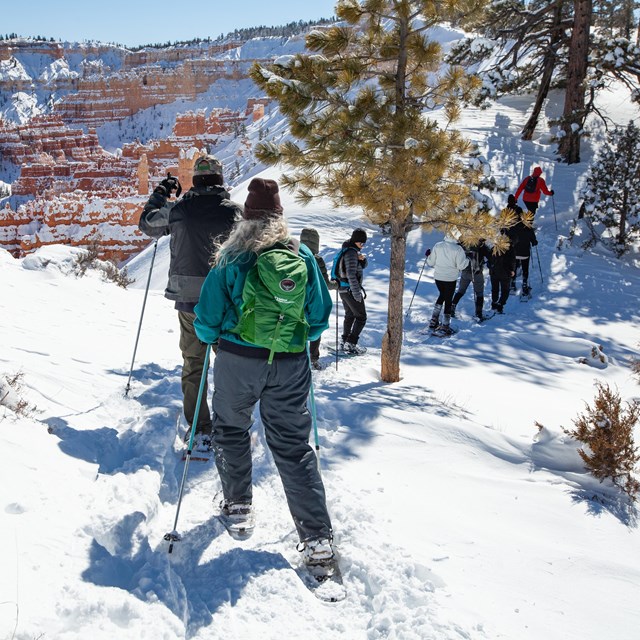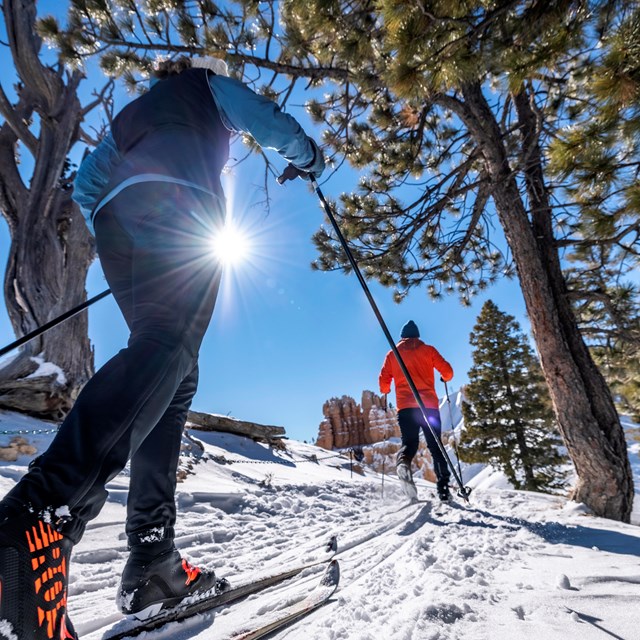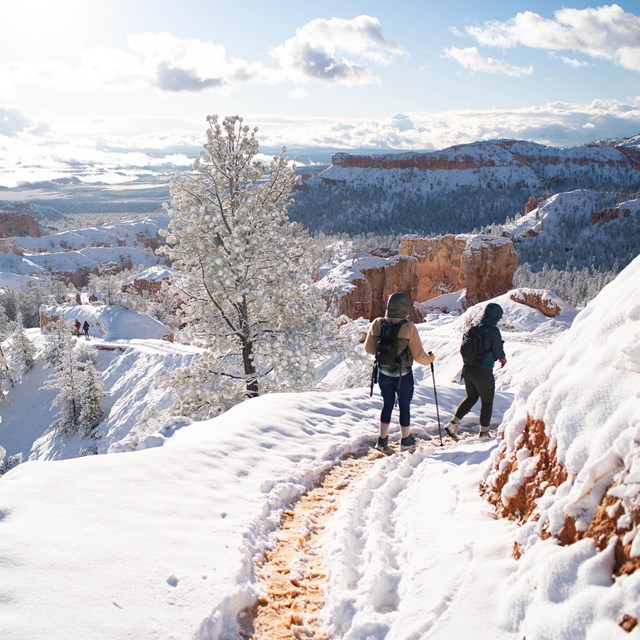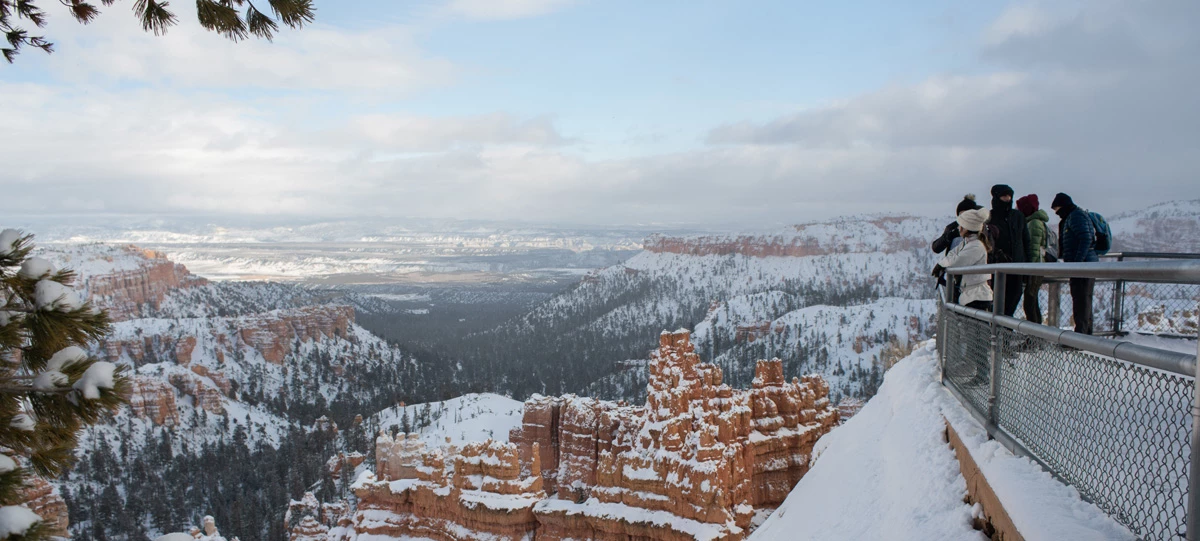
NPS Photo Planning a Winter VisitThe stark white of freshly fallen snow, red rocks, blue sky, and evergreen trees--some say Bryce Canyon is even more beautiful in winter! Here at 8,000 feet (2,438 m) the scenery changes dramatically in the colder months, providing unique opportunities to see the park and requiring a very different packing list. Begin by reviewing regular closures and regulations, read about typical weather, and then explore the many ways you can experience this winter wonderland.Winter Recreation
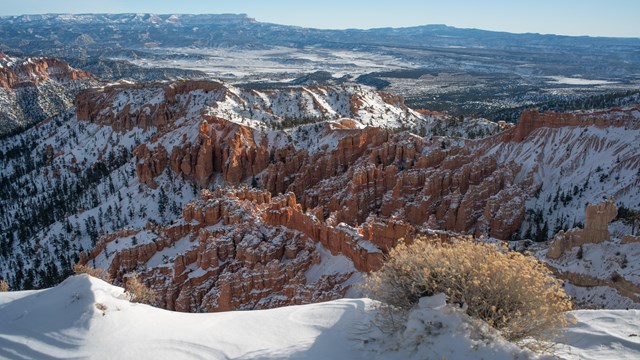
A Typical Winter Visit in 1-3 Hours
A shorter visit should focus on the Bryce Canyon Amphitheater along the first 3 miles of the park. Enjoy an easy or moderate hike. 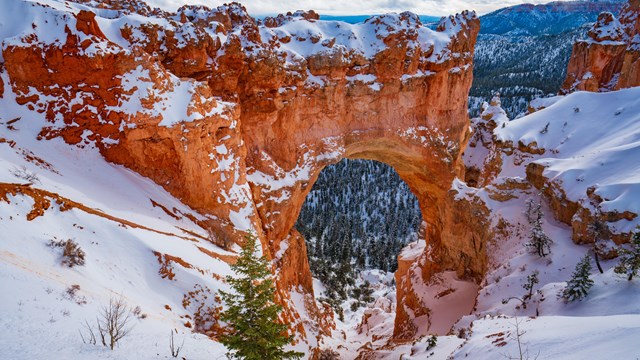
A Typical Winter Visit in 4+ Hours
After enjoying the Bryce Canyon Amphitheater, visit the Southern Scenic Drive, enjoy longer hikes and take in a ranger program.
Visit our keyboard shortcuts docs for details
A short PSA encouraging the use of footwear traction devices in winter. Winter SafetyAfter a big snowfall most of the park's day hiking trails require snowshoes. However, after a few days of melt, and with continued use, the trails become so well packed and icy that snowshoes are no longer effective to provide traction and stable footing. Traction DevicesFor much of the winter the most popular trails are so icy that steep sections cannot be safely traversed without some sort of additional traction device for your hiking shoes or boots. Mountaineering crampons or other, lighter options which fasten over your winter footwear like the one pictured here work well. We recommend wearing these devices throughout the park, especially in parking lots and other paved areas to avoid injuries from slipping and falling. Traction devices are available for purchase at the Bryce Canyon Association's bookstore at the Visitor Center. Seasonal Closures and Operations
The Bryce Amphitheater in Summer and Winter 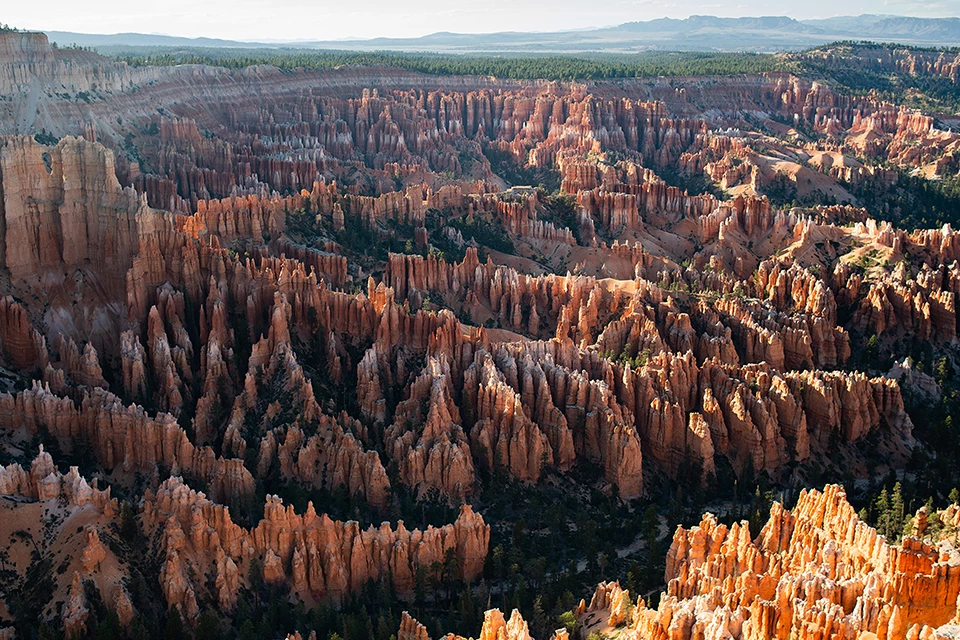
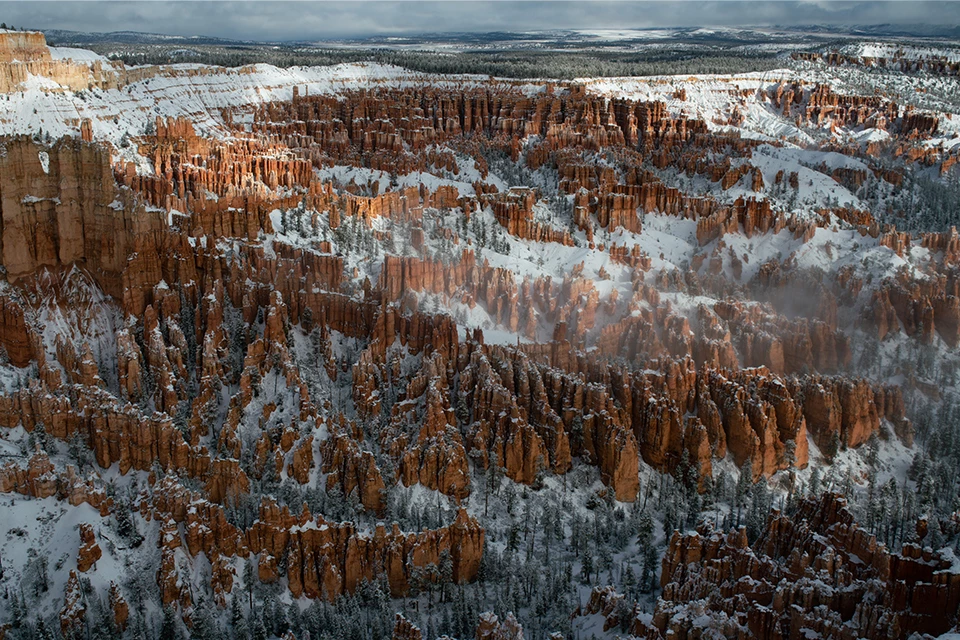
Left image
Right image
|
Last updated: March 5, 2024

